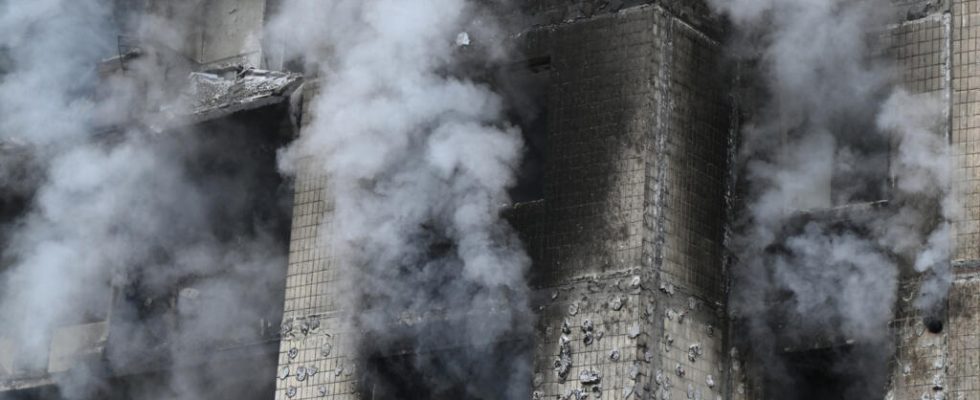A new rain of missiles fell on Ukraine this Tuesday, January 2, an attack which according to the latest report left at least five dead and several dozen injured. Once again, the Russian military used both missiles and drones to saturate Ukraine’s air defenses. A strategy whose objective is to terrorize the Ukrainian population, according to Ulrich Bounat, specialist in Central and Eastern Europe and associate researcher with Open Diplomacy.
4 mins
This is a strategy that did not work last year, with Ukraine having gone through the winter without giving in to Moscow. Why is Russia starting to massively bomb the country and residential centers again?
These are the same objectives as last year: terrorizing the population, targeting energy infrastructure and also hitting military objectives. The objectives are the same, but the way of proceeding has nevertheless changed. Last year, we had strikes from a few missiles, a few drones every day. There, it seems that the Russians have truly decided to change strategy: strike massively and punctually with the aim of saturating Ukrainian anti-aircraft defenses and therefore maximizing the chances of achieving objectives. In parallel with these massive strikes, Russia continues to send drones every night: it does not cost very much and it keeps the Ukrainian anti-aircraft system under tension.
Is this strategy of saturation of Ukrainian anti-aircraft defense working?
This works in the sense that we see variations, from one night to the next, in the success percentages of this anti-aircraft defense. For example, the day after the massive strikes on Friday December 29, the destruction percentage of Shahed drones was around 60% whereas, usually, it is more around 80%. So this may reveal a slight “fatigue” of the Ukrainian defense system. It is true that this saturation also causes an extremely massive use of defense missiles and therefore, in this context, it will be important for the West to provide new munitions fairly quickly. It is very clear that if the Russians strike so massively and regularly, the Ukrainians will have to have strong backbones in terms of anti-aircraft munitions.
Can we make a comparison, as some analysts do, between the Russian ballistic strategy and the Blitz of Nazi Germany against London in the fall of 1940?
The parallel actually seems quite relevant to me. It is very clear that in these strikes there are indeed sometimes military objectives… But, when we send 60 missiles to Kiev in one night, it is obvious that it is not only to achieve military objectives, but rather to try to terrorize the population and also perhaps to break the will of the Ukrainians, which is unlikely.
Russian industrial capabilities have apparently been “boosted” to be able to launch these missile attacks. Will Russian industry be able to maintain this pace, and if so for how long?
Indeed, we know that Russia is in a war economy and has therefore increased its production capacities, particularly in terms of missiles. The fact remains that its industrial capacities are limited by the lack of qualified labor which is already glaring in many industries in Russia, and also by the lack of components – even if Russia manages to avoid part of international sanctions. So there are intrinsic limits to Russia’s ability to produce this kind of weaponry. For Kinjal missiles for example, it is possible to produce a few hundred per year at most. So Russia cannot afford to fire a hundred missiles every night, even though it has built up stocks over the past few months.
So, is it necessarily a time-limited strategy?
I actually think that the trend will be for Russia to have high times where it will send massive missiles a few nights on a regular basis and in the meantime send a lot of drones, to continue to wear down the anti-aircraft defense. On the other hand, this type of massive strikes, as we saw this Tuesday and two days ago, with around a hundred missiles fired, is not something that Russia will be able to maintain at an extremely high frequency.
Read alsoAirstrikes on kyiv and several cities: Ukraine calls for acceleration of Western arms deliveries
